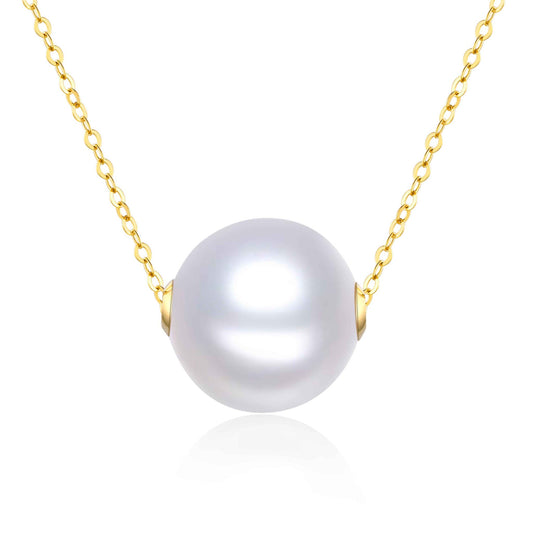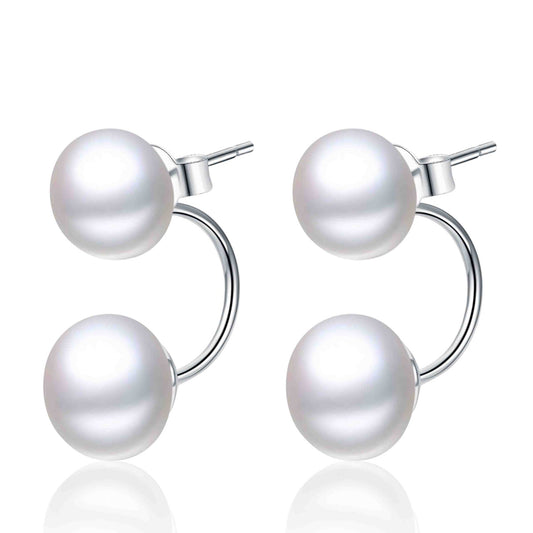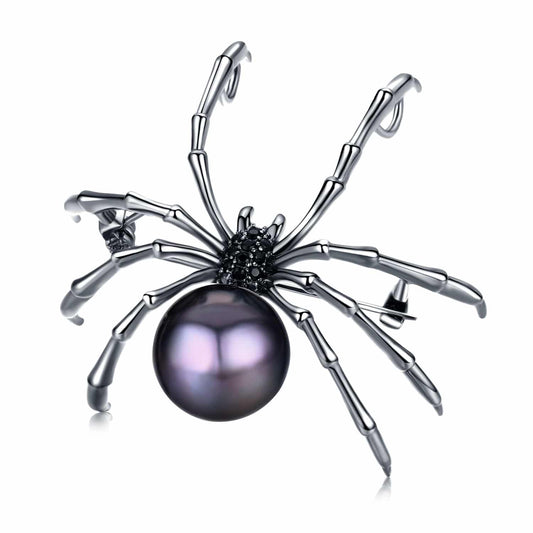
What Are Cultured Pearls?
Share
Pearls are delicate yet entirely natural, shaped only by water and time. Perhaps that is what makes them feel so extraordinary. We never carve or polish a pearl; it emerges from the sea fully formed, glowing with quiet radiance.
Before they ever lined jewelry boxes or became heirloom strands, pearls were ocean miracles found purely by chance: rare, almost sacred. Everything changed when we learned to guide the process, giving rise to the cultured pearl.
That discovery didn’t diminish their magic; it deepened it. We came to see how much devotion a single pearl requires: years of waiting, layer upon layer of nacre, an ocean’s worth of patience.
This is the journey we invite you into, how cultured pearls are born, how they are nurtured, and why they still hold true value in a world that often measures worth by less enduring things.
Natural vs. Cultured Pearls: A Quick Primer
Many people picture pearls forming by chance: an oyster in some distant reef slips a grain of sand inside, and, over time, a gem appears. The image is romantic and partly true, yet incomplete.
Natural pearls really do arise by chance: an irritant sneaks into a mollusk, which coats it with nacre until a pearl materializes. No human hand guides the process, making such pearls vanishingly rare today.
Cultured pearls shifted that reality. Instead of waiting for an accident, pearl farmers insert a tiny nucleus into the mollusk to spark the same natural response. From that point on, nature takes over, layer after iridescent layer of nacre, the same luster, the same glow, only now the outcome is predictable and sustainable.
So let’s clear up a common misconception: cultured pearls are every bit as genuine as their wild counterparts. They aren’t synthetic or “fake;” their story simply begins with a touch of human care.
The Cultivation Process: How Pearls Are Grown
If you’ve never seen a pearl get into the formation, you might be in awe of how beautifully it forms. There’s no machinery, no noise, just the benign deep water around the oysters.
The process of growing a cultured pearl begins with patience. Truly technical in attempt, but naturally brings into existence. It initiates when a skilled farmer delicately places a tiny nucleus inside a mollusk. This step takes real precision. It’s done by hand, often under magnification, because any mistake could stress the animal or affect how the pearl forms.
The oyster is returned to the water, and then, we wait. Over the next few months (or sometimes even years), the mollusk covers that little piece with layers of nacre. The temperature, even the position of the mollusk, can make a difference.
The place defines the category. For freshwater cultured pearls, this journey happens in rivers and lakes, where mussels grow pearls in more varied shapes and colors. In saltwater, you’ll find Akoya, Tahitian, and South Sea pearls forming in warmer currents.
Every pearl carved from these farms is the result of time, environment, and quiet attention. They don’t grow in a rush. And that’s part of why the final jewel feels so special, because it signifies patience and holds the value of time within.
Types of Cultured Pearls: Know What’s Out There
It’s amusing how people assume all pearls look the same. That's not true. In reality, there’s a whole world of variety out there: soft, sharp, dark, delicate, and none of them really feel alike once you’ve seen them up close.
Let's assume it is a freshwater cultured pearl necklace in your hand. The shapes aren’t perfectly round, and that’s what makes it feel so real. Each pearl has its own curve, a soft blush in the light, as if they are telling their own treasure trove instead of trying to match each other. These pearls are grown in lakes and rivers, and they tend to come in gentle shades, it could be whites, peaches, pinks, and even lavender sometimes. They feel your own, personal.
Then you have Akoya pearls, a bit more traditional. They’re known for their mirror-like shine that resembles perfection. If you’ve ever borrowed a grandmother’s pearl strand, chances are it was Akoya.
Now, Tahitian pearls, they’re in a category of their own. These are the moody ones. Deep greens, stormy grays, purples that shift depending on the shade of light. We've seen people fall in love with them at first glance.
And if you want something bold, there’s the South Sea pearl, full of presence. They usually grow in warmer waters near Australia and have this soft golden or silver hue that feels almost royal but without the flash.
Each cultured pearl has its own look, but what really matters is how it makes you feel. There’s no formula to it. You just know when it’s right.
Why Cultured Pearls Matter: Sustainability & Legacy

Bit by bit, nacre builds into something extraordinary, which is why pearls feel unlike any other gem. You don’t mine, cut, or polish them into shape; they grow quietly, naturally, on their own schedule.
Cultured pearls simply guide that miracle without spoiling its beauty. Nothing about them is artificial; we just nudge a rare process so it becomes slightly more attainable.
Surprisingly, pearl farming also nurtures the sea itself. Oysters filter the water as they live, purifying their surroundings and strengthening entire ecosystems.
The craft behind it runs deep, too. In many coastal communities, the skill of raising oysters has passed from one generation to the next, knowledge you feel in your hands more than you put into words.
That lineage is why cultured pearls matter, not only for their luminous elegance, but for their origin, their making, and the enduring legacy they carry.
Begin Your Cultured Pearl Story with Us

Some things don’t need to leave an impression. Pearls are like that, truly unforgettable.
We believe a cultured pearl doesn’t just complete an outfit. It marks a moment. A new beginning. That’s why we spend time choosing each piece, especially our cultured pearls. Every strand, pendant, and earring we offer carries a certain feeling. Something pure. Something lasting.
Connect yourself with generations, explore our collection. Just don’t rush, take your time, and find the one that fits your story.






